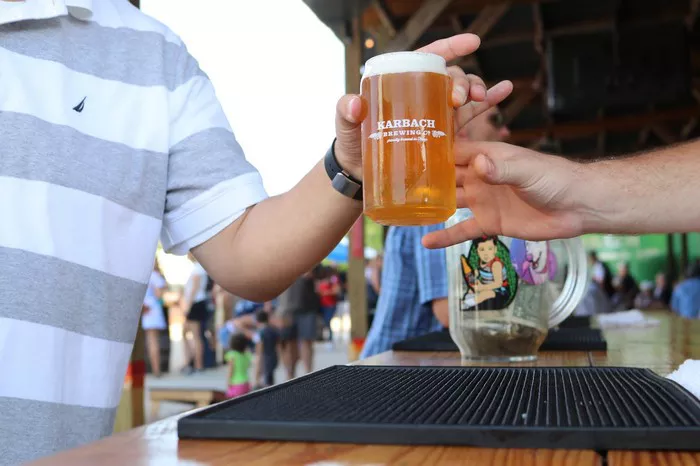Craft beer enthusiasts worldwide often find themselves immersed in a world of rich flavors, diverse brewing techniques, and an array of styles. Amidst this vast landscape, one acronym reigns supreme – IPA. This article aims to delve into the depths of this revered term, exploring its origins, characteristics, evolution, and its significant role in the beer industry.
The Origin Story: IPA’s Historical Roots
To understand what IPA means in beer, one must journey back to the 18th century when British brewers embarked on a quest to create a beer capable of withstanding long sea voyages to India. The British Empire’s expansion necessitated a beer that could endure the arduous journey from England to India. Thus, the India Pale Ale (IPA) was born.
IPA was designed with a higher alcohol content and an abundance of hops, serving as a preservative for the long and tumultuous voyage. Its distinctive bitterness and robust flavors were well-suited for enduring the rigors of travel, emerging as a favorite among sailors and merchants alike.
Decoding the Acronym: Understanding the Characteristics of IPA
At its core, the acronym IPA stands for India Pale Ale. However, within the realms of beer aficionados, it signifies much more. IPAs are renowned for their pronounced hoppy bitterness, often accompanied by floral, citrus, or piney aromas and flavors. This distinctive bitterness stems from the generous use of hops during the brewing process.
The brewing of IPA involves a significant hop presence at various stages, including during boiling, fermentation, and dry-hopping. This meticulous hop infusion contributes not only to the beer’s bitterness but also to its complexity, offering a spectrum of flavors and aromas that captivate the senses.
Evolution of IPA: From Tradition to Innovation
Over the years, the IPA style has undergone a remarkable evolution, embracing innovation while honoring tradition. As craft brewing gained momentum globally, brewers began experimenting with diverse hop varieties, malts, and brewing techniques, resulting in an explosion of IPA sub-styles.
From the classic English IPA characterized by a balanced malt-hop profile to the assertively bitter American IPA showcasing citrusy and resinous hop notes, the spectrum of IPA styles has expanded exponentially. Additionally, variations such as Double IPAs (DIPAs) and New England IPAs (NEIPAs) have pushed the boundaries further, introducing unique twists on the traditional IPA.
IPA’s Impact: Influence on the Craft Beer Revolution
The significance of IPA in the craft beer revolution cannot be overstated. Its popularity has transcended borders, captivating beer enthusiasts worldwide and inspiring a fervent following. The bold flavors, diverse profiles, and innovative iterations of IPA have played a pivotal role in shaping consumer preferences and challenging brewing norms.
Breweries dedicated to IPA production have thrived, cultivating a culture that celebrates experimentation and creativity. The widespread acclaim and demand for IPA have encouraged breweries, both small and large, to craft their unique interpretations, contributing to the ever-expanding landscape of flavors in the beer industry.
IPA Beyond Borders: Global Adoption and Adaptation
While IPA’s origins lie in Britain, its global embrace has led to adaptations and interpretations in various regions worldwide. Brewers from different countries have incorporated local ingredients and brewing traditions, resulting in unique regional variations of IPA.
For instance, in Australia, the use of Australian hops in brewing Australian IPAs showcases native hop varieties, infusing the beer with distinctive tropical and fruity notes. Similarly, Belgian brewers have incorporated their expertise in yeast cultivation, introducing Belgian IPAs characterized by a marriage of Belgian yeast strains and American hop profiles.
Navigating IPA Styles: Understanding the Diverse Spectrum
The world of IPA encompasses a diverse spectrum of styles, each offering a distinct sensory experience. Understanding the nuances between various IPA styles can enhance one’s appreciation and enjoyment of these flavorful brews.
English IPA: Known for its balanced maltiness and earthy hop character, the English IPA exhibits moderate bitterness and a more restrained hop profile compared to its American counterparts.
American IPA: Renowned for its bold hop presence, the American IPA boasts assertive bitterness, accompanied by vibrant citrus, pine, or tropical fruit aromas and flavors.
New England IPA (NEIPA): Distinguished by its hazy appearance and juicy, tropical fruit-forward flavors, the NEIPA emphasizes hop aroma and flavor while minimizing bitterness.
Double IPA (DIPA): Often referred to as Imperial IPA, the DIPA showcases amplified hop characteristics, elevated alcohol content, and a robust malt backbone.
Belgian IPA: Combining the yeast complexity of Belgian ales with the hop intensity of IPAs, Belgian IPAs feature fruity esters from Belgian yeast strains alongside notable hoppy bitterness.
IPA’s Continuing Legacy: Influence on Beer Culture
The enduring legacy of IPA in the realm of beer culture is palpable. Its impact extends beyond its flavor profile, shaping consumer preferences, brewing practices, and even culinary experiences. The IPA’s versatility in pairing with a wide range of cuisines, from spicy dishes to creamy desserts, has contributed to its widespread popularity and cultural significance.
Moreover, the IPA’s influence extends to homebrewing communities, where enthusiasts experiment with diverse ingredients and techniques to craft their unique interpretations of this beloved style. The IPA’s prominence in beer festivals, competitions, and brewery taprooms underscores its enduring appeal among beer enthusiasts.
Conclusion: A Taste of IPA’s Legacy
In summary, the acronym IPA encapsulates a rich tapestry of history, innovation, and flavor. From its humble origins as a provision for long sea voyages to its current status as a global beer icon, IPA continues to evolve and captivate beer enthusiasts worldwide.
What does IPA mean in beer? It symbolizes not just a style but a journey—a journey marked by bold experimentation, unwavering creativity, and an unyielding dedication to pushing the boundaries of brewing. As IPA continues to evolve and diversify, its legacy remains firmly embedded in the heart of beer culture, leaving an indelible mark on the ever-expanding world of craft beer.


